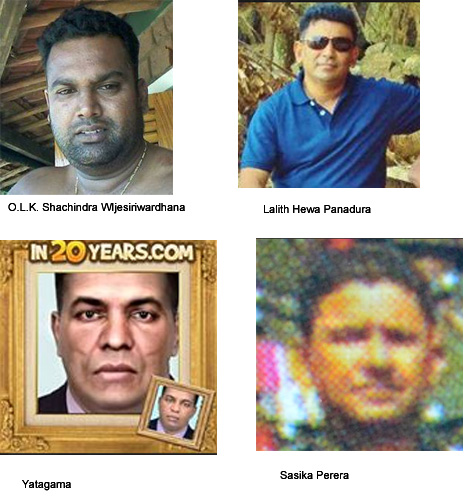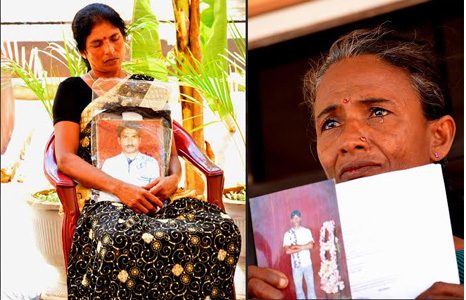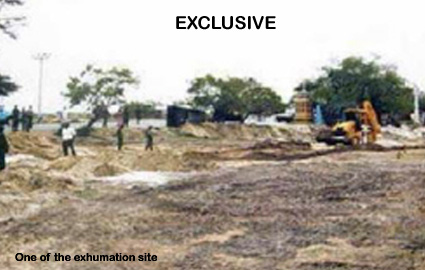Investigations revealed that 18-year-old Krishanthi Coomeraswamy, a student of Chundikuly Girls’ High School, was abducted at the Kaithadi military checkpoint on 07 September 1996, gangraped and murdered. The suspects in this crime were several officers and a soldier of the Army. However, the entire blame was placed on the shoulders of the soldier, Somaratne Rajapakse, as the rapist and the murderer in the end. Now imprisoned, he says he is suffering this fate due to the betrayal of his senior officers.
Later, a mass grave was found at Chemmani. No one was found guilty over this mass grave, and the case was relegated to the dustbin of history. That is due to whose fault?, we thought of elaborating once again. Finding no one responsible over the Chemmani mass grave is one reason for the international community to question the human rights situation in Sri Lanka.
As said by Amnesty International in 1997, as many as 600 civilians went missing from Jaffna alone during the 1996-97 period. It is said that they disappeared after being arrested by the military.
In 1998, the Sri Lanka Human Rights Commission began inquiring into these disappearances, but no one has been found accountable.
 However, according revelations so far, including the information given by Somaratne Rajapakse, he had only followed the orders of his superior officers, but he had committed no rape or murder. He has burnt bodies and kept several pieces of jewellery with him. Also, he exposed Jaffna’s Araly camp commanding officer Capt. C.J.T.K. Lalith Hewa (61834), Capt. T.D. Sasika Perera (62188), Capt. Sachindra Wijesiriwardena (62421) and Lt. A. Yatagama (63088) as those responsible for several rapes and murders in the area.
However, according revelations so far, including the information given by Somaratne Rajapakse, he had only followed the orders of his superior officers, but he had committed no rape or murder. He has burnt bodies and kept several pieces of jewellery with him. Also, he exposed Jaffna’s Araly camp commanding officer Capt. C.J.T.K. Lalith Hewa (61834), Capt. T.D. Sasika Perera (62188), Capt. Sachindra Wijesiriwardena (62421) and Lt. A. Yatagama (63088) as those responsible for several rapes and murders in the area.
After Somaratne claimed these officers to be responsible also for the Chemmani mass grave, the military and the government disregarded these officers. Turning Somaratne a state witness based on his evidence, a case was filed (case no B 28/99), and on 13 March 2000, the four officers were remanded by the Jaffna courts. Their passports were impounded. However, they obtained personal legal support and got bail on 06 July of the same year by filing appeal H.C.B.A. 29/2000. They were given personal legal support by Peter Mohan Maithri Peiris, then an assistant advocate at the Attorney General’s Department.
Later, the case was taken up several times, but as soon as Mohan Peiris was posted to high positions, the Chemmani mass grave case was thrown under the carpet. The impounded passports were returned to the suspects. For these services, Mohan Peiris received a considerable sum of money from the suspects.
What happened to Chemmani mass grave case?
 Today, the suspect Army officers live freely, while the state witness Somaratne Rajapakse remains behind bars. Another thing is that despite ethics that prevent a murder suspect from securing promotions, all these officers have been promoted.
Today, the suspect Army officers live freely, while the state witness Somaratne Rajapakse remains behind bars. Another thing is that despite ethics that prevent a murder suspect from securing promotions, all these officers have been promoted.
Now, Lalith Hewa is a senior Lt. Col. in charge of a miliary bungalow in Panadura, while Sasika Perera, also a senior Lt. Col., is the commanding officer of the Mannar Army camp. Junior Lt. Col. Sachindra Wijesiriwardena is the commanding officer of Mullaitivu Army camp. Lt. Yatagama is retired from the Army.
There are several other recent revelations too. During the previous Rajapaksa regime, Somaratne was one of the targets in the murder of prisoners at Welikada Prison. However, his vigilance paid off, and he was able to save his life.
Also, the suspect officers had done a great deal for Mahinda Rajapaksa during his election campaigns, and they were obedient followers of the then defence secretary.
The Sri Lankan state has been unable to mete out justice on account of the victims of the Chemmani tragedy. The ‘Yaha Paalana’ regime has a responsibility to ensure justice in this matter.
